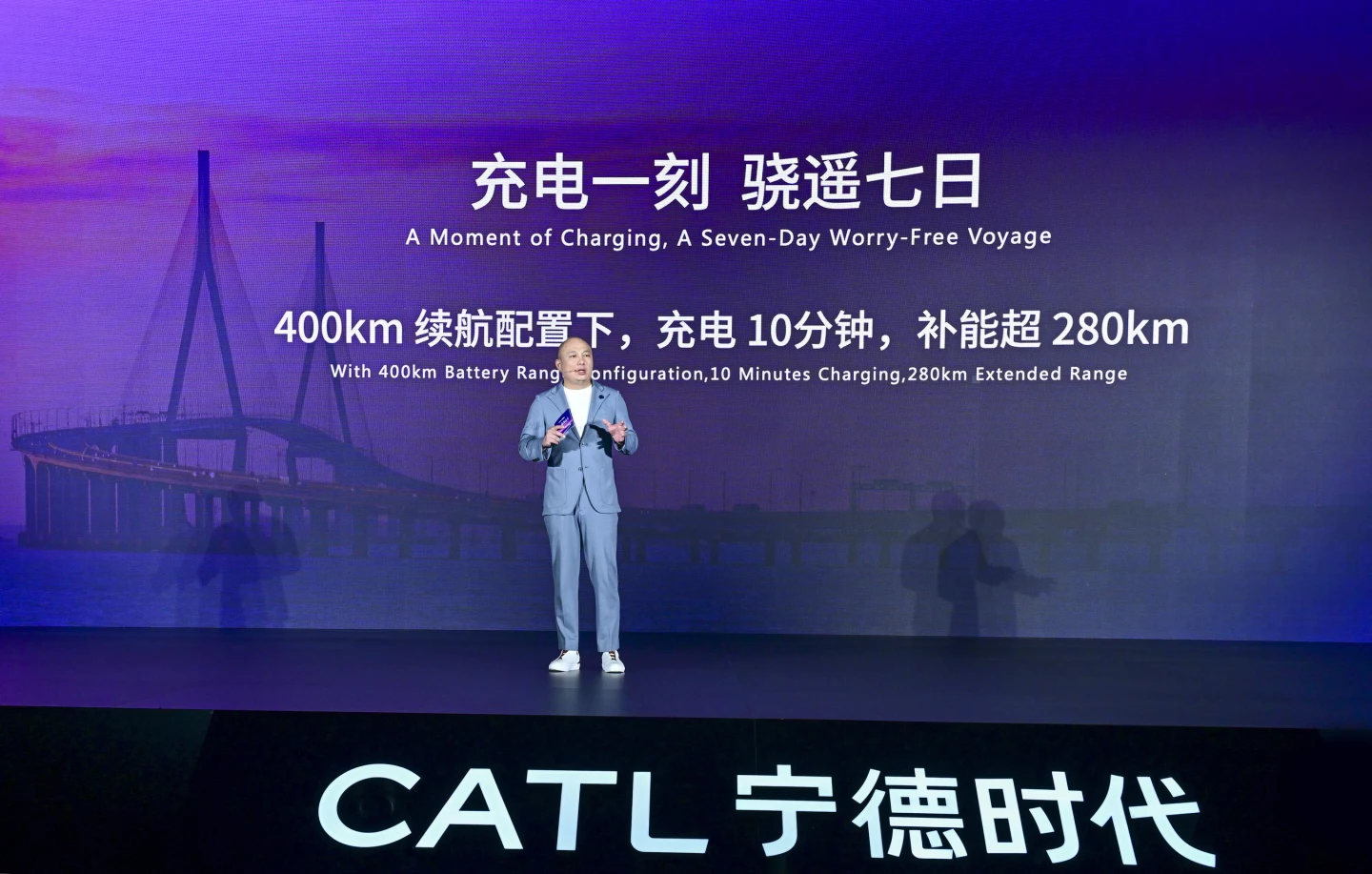The world's largest battery manufacturer, CATL, announced on Thursday a new style of battery destined to create a cleaner, longer-range generation of plug-in hybrid vehicles. The Freevoy Super Hybrid Battery debuts to give PHEVs and extended-range electrics (EREVs) the type of zero-emissions all-electric range that was previously reserved for battery electric vehicles. Freevoy-powered hybrids will travel farther with fewer fueling stops, whether they're relying solely on battery power or tapping into an ICE drive or generator. When battery power and fuel finally do run out, drivers can choose 10-minute battery charging, refueling or both.
CATL frames its newest battery as a solution to commonly cited PHEV and EREV shortcomings at a time when consumer interest in hybrid vehicles is increasing. More specifically, the Freevoy battery addresses issues with insufficient range, slow charging times and diminished performance in cold temperatures.
Leaping well past the single day's worth of all-electric commuting around which many plug-in hybrids are optimized, CATL aims the Freevoy at a full week's worth of single-charge battery-only commuting, slapping on a range estimate of 249 miles (400 km). The company has not released a Freevoy capacity to go along with that estimate, and any range will, of course, depend upon the vehicle in which it resides, as well as driving conditions and other factors.
The Freevoy isn't only a "super hybrid" because of the vehicles it's designed to power but also its chemistry. It takes advantage of CATL's AB architecture, combining sodium-ion and lithium-ion batteries into a single pack in a defined ratio. This improves cold-weather performance, extending low-temperature range by a claimed 5% and delivering a seamless driving experience down to -20 °C (-4 °F). Further, CATL says the battery achieves discharge capability down to -40 °C (-40 °F) and charging to -30 °C (-22 °F).
When it comes time to charge, the Freevoy battery benefits from CATL's 4C ultra-fast charging technology, sucking in 174 miles (280 km) worth of range in just 10 minutes. Fast lithium ion transfer is ensured by a fast ion conductor coating on the cathode, fast-charging graphite and novel nano-coating technologies for the anode, multi-gradient layered electrode design, and ultra-high conductivity electrolyte formulation.

Freevoy technology sounds incredible ... maybe too incredible. All that electric range, coupled with ultra-fast charging, combined with a range-extending engine-generator or full ICE powertrain seems like it could handily surpass the point of diminishing returns. How far does the average driver really need to go before stopping to charge or refuel? And at what point are you just throwing money at redundant systems to extend range to a virtually unusable figure?
CATL's 249-mile estimate is several times more than the current-generation PHEV ranges to which we're accustomed. In the US, for instance, all-electric ranges on new 2023/24 PHEV models top out at 51 miles (82 km, Range Rover P440e) – just over 20% of CATL's quoted range. And that's an outlier, with most ranges falling between 20 and 40 miles (32 and 64 km).
The contrast isn't as stark in China, where more PHEVs have been achieving combined range ratings over 621 miles (1,000 km). The all-electric component of those ranges varies widely across vehicles, but the Voyah Free 318 took the overall PHEV electric range crown a few months ago with a claimed 198-mile (318-km) range that's already about 80% of CATL's target.
So maybe 250 miles isn't so crazy for the Chinese market.
We suppose if you lack a dedicated home hookup for overnight charging and a charger at work, getting through the entire calendar week, or even just the workweek, on a single charge would add a lot of convenience. And the added range of an ICE would be useful for driving beyond 249 miles in a given week and taking longer road trips on the weekend or vacation.
It will be interesting to see if automakers focus on using the Freevoy to increase overall range to crazy figures or more to shift reliance over to the electric side by decreasing ICE size and/or fuel capacity.
CATL says the new battery is already being incorporated into domestic models from brands that include Li Auto, Avatr and Deepl. By next year, it expects a total of 30 hybrid vehicle models with Freevoy batteries to be ready for launch. Other brands slated to incorporate the new battery include Geely, Chery, GAC, and Voyah.
Source: CATL





